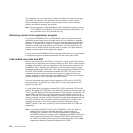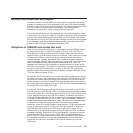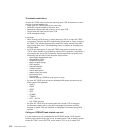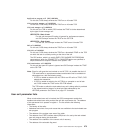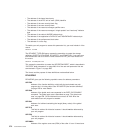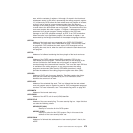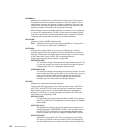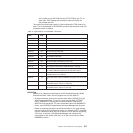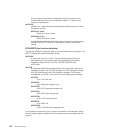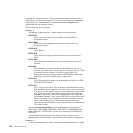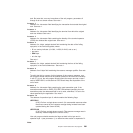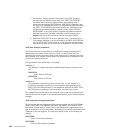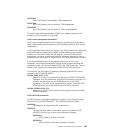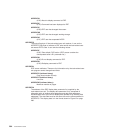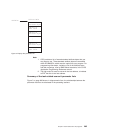An exit program must make no assumptions about the contents of the
Performance Block and must not attempt to modify it: if it does so, the
results are unpredictable.
UEPTRCE
Address of a 1-byte trace flag indicating whether RMI tracing (the RI trace
component) is active.
UEPTRLV1 (X'80')
RMI level 1 trace is active.
UEPTRLV2 (X'40')
RMI level 2 trace is active.
Having tested this field, the task-related user exit could, for example, issue
an EXEC CICS SET TRACETYPE command to reset the level of RMI
tracing.
DFHUERTR (the function definition)
The function definition identifies the caller of the task-related user exit program. The
DSECT contains two symbolic definitions (fields).
UERTFGP
A single byte that is set to X'00'. The zero setting shows that this is a
task-related user exit invocation and that the parameter list therefore
includes the fields UEPTAA, UEPTAL, UEPEIB, UEPURID, and
UEPFLAGS.
UERTFID
A single-byte identifier that shows whether this call has been made by an
application program, the CICS SPI manager, the CICS syncpoint manager,
the CICS task manager, the CICS termination manager, CICS context
management, or by EDF. It can have one of the following seven settings:
UERTSPI
(X'01') CICS SPI call.
UERTAPPL
(X'02') Application program call.
UERTSYNC
(X'04') CICS syncpoint manager call.
UERTTASK
(X'08') CICS task manager call.
UERTCTER
(X'0A') CICS termination call.
UERTFEDF
(X'0C') EDF call.
UERTFCON
(X'0E') CICS context management call.
It is important to know which type of program has made the call because it affects
how the calling program’s parameter list is interpreted by the task-related user exit
program.
278 Customization Guide



